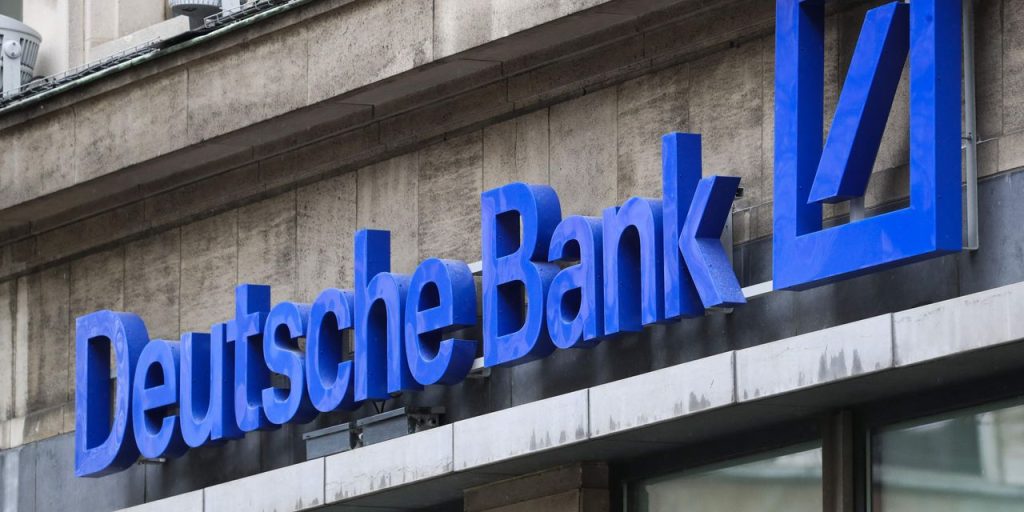Deutsche Bank, known as Wall Street’s most pessimistic bank, is weighing in on the inflation debate with an optimistic view: It sees the Federal Reserve’s favorite inflation gauge falling even further than the central bank thinks by year-end.
The analysis by strategist Gabriele Cozzi and researcher Matthew Raskin, released on Wednesday, is significant because so-called core inflation as measured by the personal consumption expenditures price index has remained stubbornly high for months. Core readings from the consumer price index have also stayed elevated — prompting Federal Reserve policy makers to eye two more rate hikes this year, and putting an abrupt end to the recent rally in U.S. stocks.
If Deutsche Bank’s view comes to fruition, that could give equity investors enough reason to turn bullish again. The S&P 500 SPX and Nasdaq Composite COMP each finished Friday with their longest weekly winning streak in years, though they lost some of their recent gains on Tuesday and Wednesday.
In a note released during the question-and-answer session of Fed Chairman Jerome Powell’s testimony to the House Financial Services Committee on Wednesday, Cozzi and Raskin cited a range of model estimates that suggest core PCE is set to drop to between 3.3%-3.9% on a year-over-year basis by the fourth quarter. That’s down from the 4.6%-4.7% year-over-year readings that prevailed each month from January through April.
“Depending on the assumptions used, the set of estimates produce a range between 3.3% and 3.9% y/y, with the most plausible scenario indicating core PCE at 3.5% in Q4,” Cozzi and Raskin wrote. Meanwhile, Deutsche Bank’s economics team sees a 3.6% core PCE rate for 2023. Those estimates compare with a 3.9% core PCE inflation rate for this year expected by Fed policy makers, based on their median forecast released last week.
Source: Deutsche Bank, Haver Analytics, Federal Reserve
The conclusions by Cozzi and Raskin are consistent with Deutsche Bank’s larger macro view, which rests on “end-of-cycle dynamics in the U.S.” Last week, Deutsche Bank strategists Marion Laboure, Cassidy Ainsworth-Grace, and Jim Reid released slides indicating that they see a 100% likelihood that the U.S. will fall into a recession in the fourth quarter of this year or first quarter of 2024.
In layman’s terms, slowing economic growth should theoretically help cure the inflation problem, by bringing down demand and price pressures.
Deutsche Bank’s core PCE inflation estimates are based on assumptions about indicators that include the private quits rate, the University of Michigan’s 5-10 year inflation expectations, the Cleveland Fed’s new tenant repeat rent index, and the core producer price index.
The bank isn’t entirely alone in its general thinking about the most likely path ahead for inflation and the economy. Steve Blitz, chief U.S. economist at TS Lombard, said “the recession view remains very much intact.” And traders of derivatives-like instruments known as fixings see the headline annual CPI rate falling to 3% for June from 4% in May, before drifting toward 2% starting in October.
Source: Bloomberg
Gang Hu, an inflation trader at New York hedge fund WinShore Capital Partners, said that based on his own model — which he describes as “albeit, for sure, a flawed one” — the market is implying “a roughly 2.5%” core CPI rate for the next 12 months, as of Wednesday.
In April of last year, Deutsche Bank became the first major Wall Street bank during the current inflation era to predict a U.S. recession. Last June, the German bank said it saw a chance that inflation would fail to decelerate by as much as forecasters or the Fed expected.
During Powell’s testimony on Wednesday, the Fed chairman was pressed by a lawmaker about why the central bank’s forecasts have repeatedly missed the mark by predicting inflation would eventually fall toward 2%. Powell responded by saying policy makers don’t have any advantage over private forecasters when it comes to their inflation calls, and that “essentially all forecasters have made the same mistake” by underestimating the persistency of price gains.
On Wednesday, major U.S. stock indexes
DJIA,
SPX,
COMP,
ended lower for the third straight session, led by a 1.2% drop in the Nasdaq Composite. Meanwhile, short-term Treasury yields advanced, led by a jump in 3- and 6-month T-bill rates, according to Tradeweb.
Read the full article here
